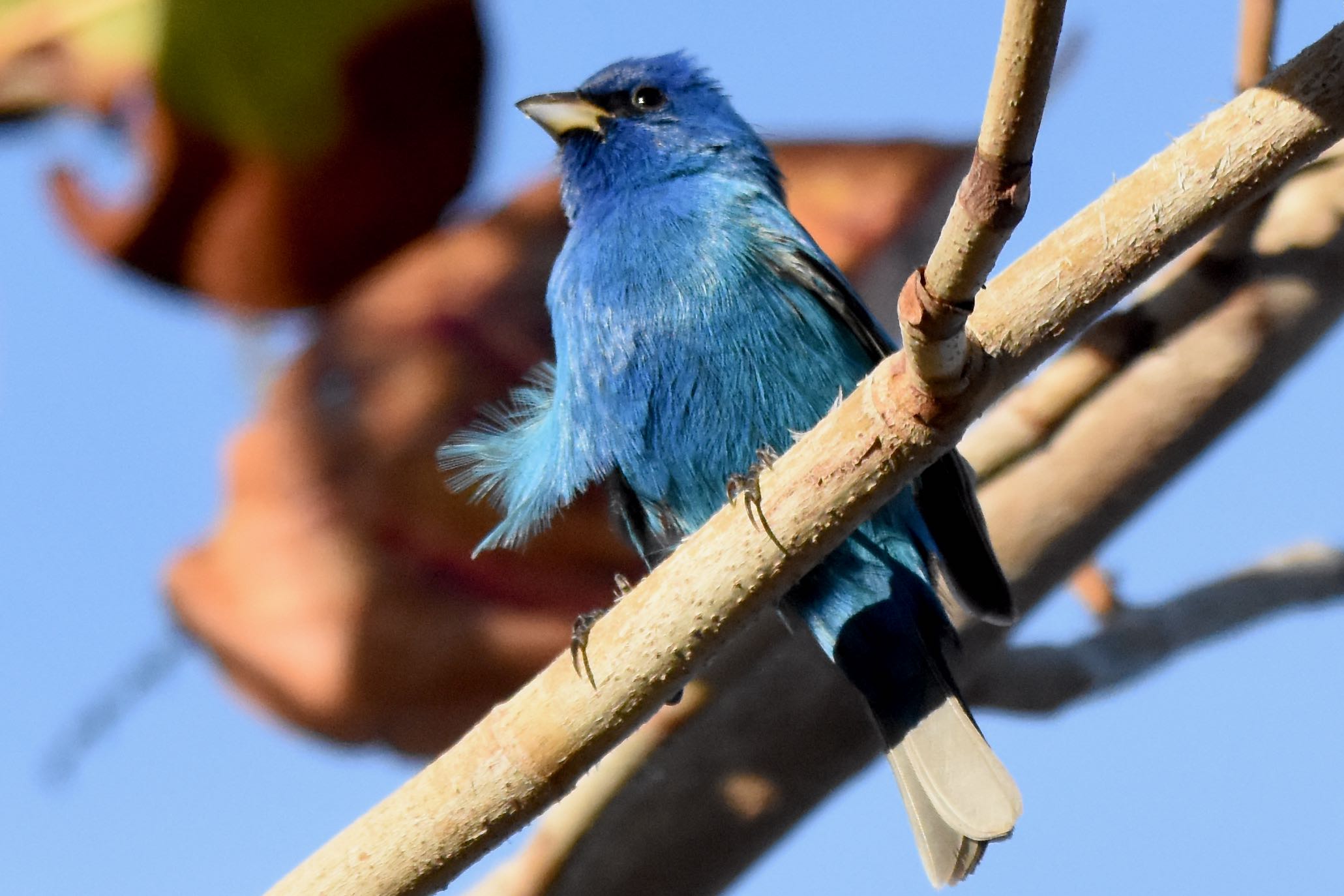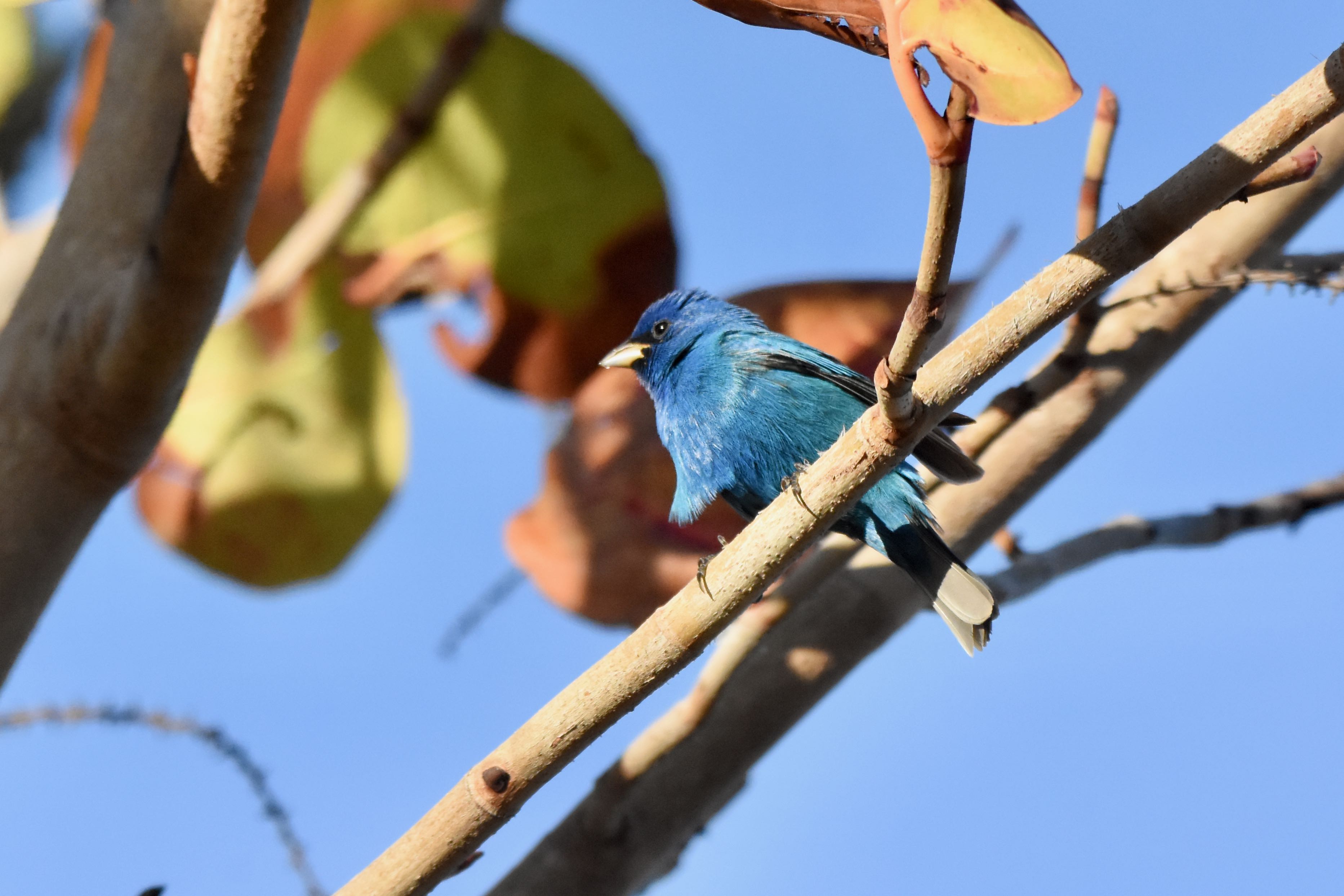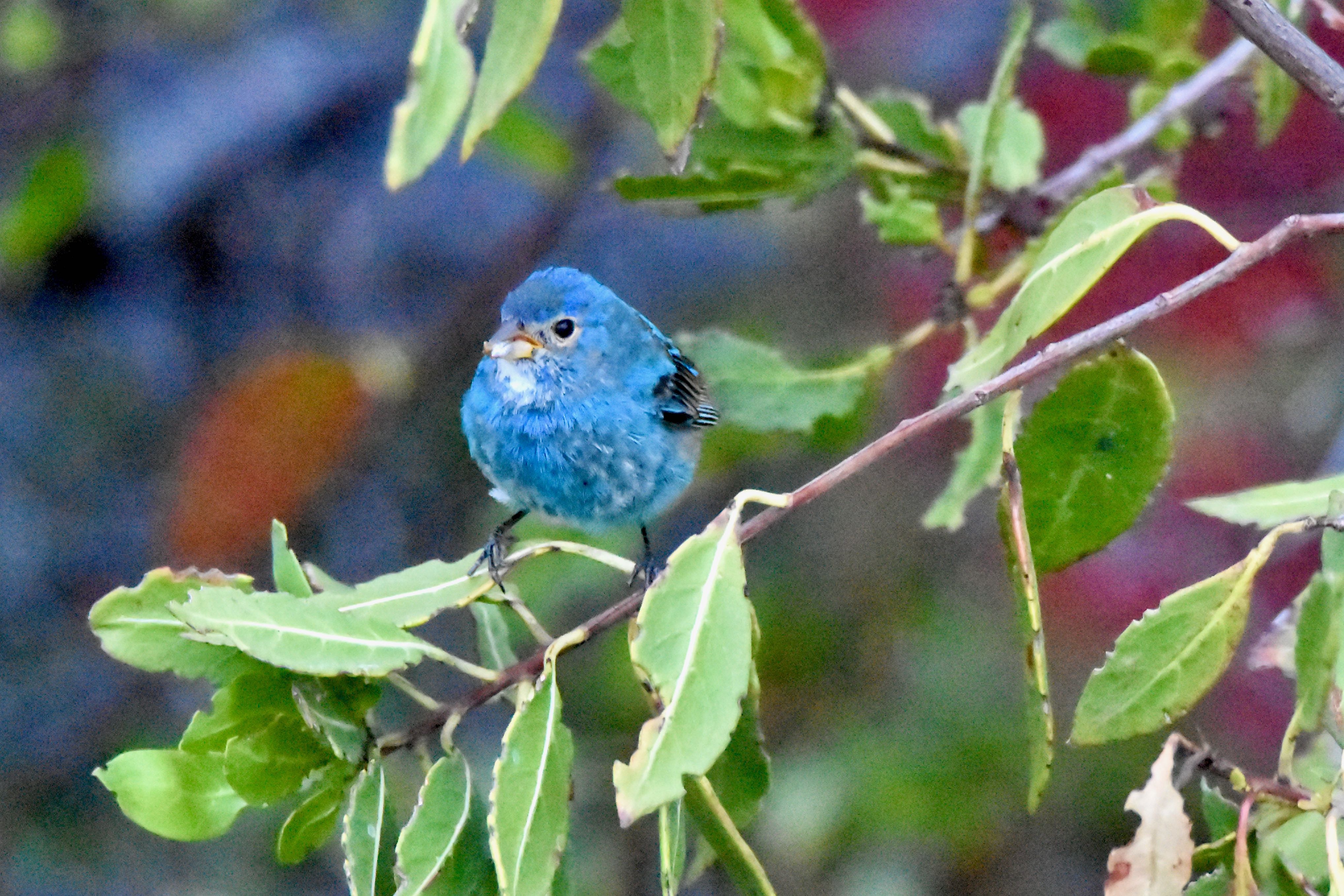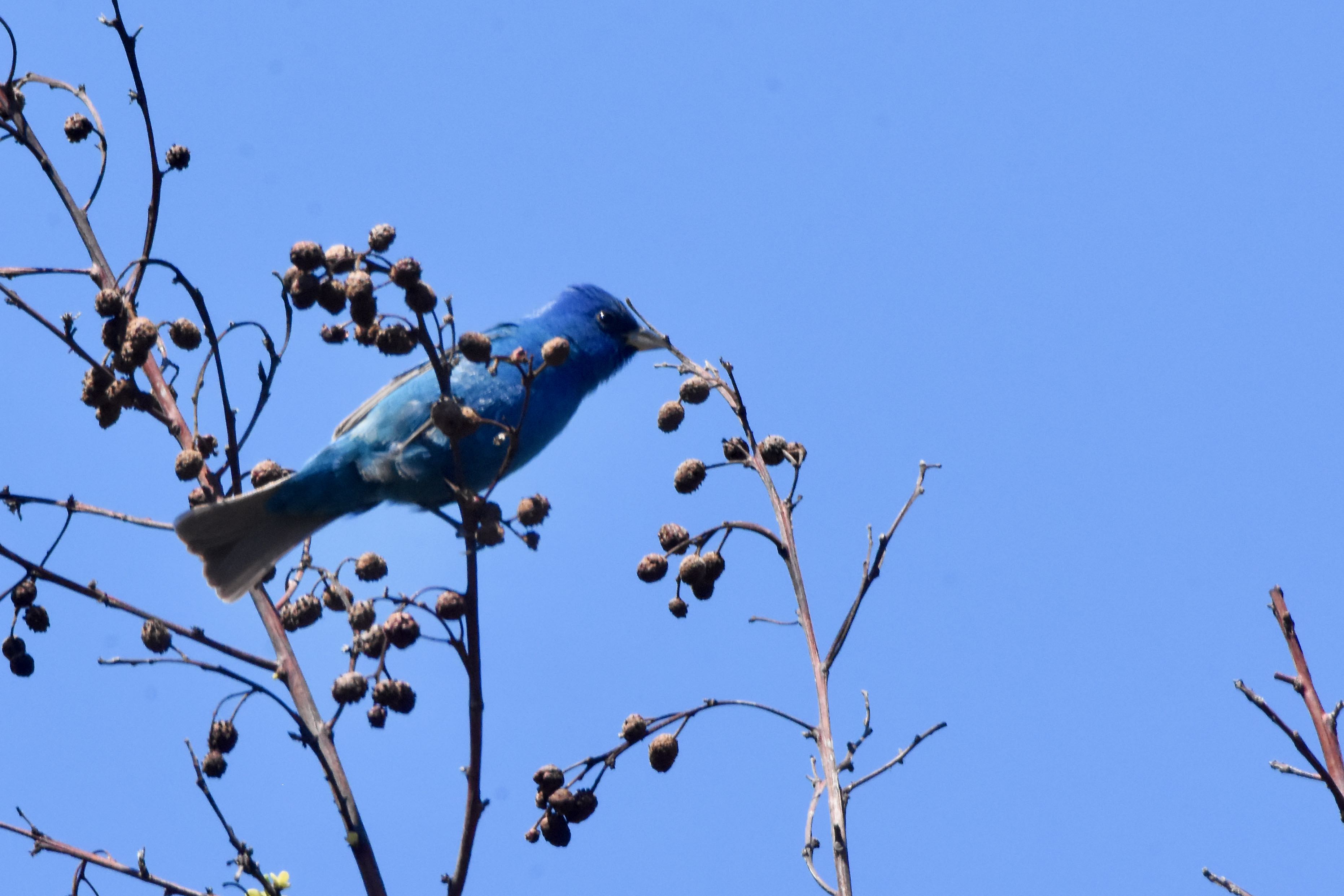
Indigo bunting, photographed at Garden Key, Dry Tortugas National Park, Monroe County, in April 2017.
This blue bird isn't blue at all, at least not in an absolute sense. Like all birds that appear blue, the indigo bunting, Passerina cyanea, doesn't have a drop of blue pigment in its feathers, which are actually a very dull brown-black.
Instead, the blue appearance comes from the physical structure of the feathers, which reflect and refract blue light. Regardless, the effect creates one incredibly beautiful, bird, especially with the deep blue of the sky as a backdrop.
Indigo buntings are common birds in parts of Florida, especially the Northern Panhandle where they breed in summer. There are records of some unconfirmed sightings of indigos nesting as far south as Palm Beach County, but they're far more likely to be spotted here during the winter or when they're passing through as they migrate in spring and fall.
Indigo buntings are exclusively migratory, moving south in winter, north in spring at night, navigating by the stars. Their summer range covers most the United States east of the Rockies and extends into the Southwest. They're also found in southern Canada. In winter, they retreat southward into Mexico, the Caribbean and Central America.
They are small birds, about five inches long, with a wingspan of less than nine inches. Indigo buntings appear stocky for their size. Males are the ones with the color, including some black striping in the wings. Females are a dull brown, with some color in the breast. Blue indigos aren't birds of the deep forest but rather brushy areas and thickets. They can be seen on along the edges of forests and in places where roads, powerlines or streams cut through them. In winter, they'll take to a wider range of habitats, including grasslands, fields and lawns. Elderberry thickets are a favorite in Florida.
The Florida Fish and Wildlife Conservation Commission noted how the blue indigo population yo-yoed in Central Florida where hard freezes killed citrus groves. As the groves were abandoned, they became fields of tall weeds and brush, providing perfect habitat for blue indigos. Their numbers soared until those fields started turning into forest or were redeveloped into other agricultural uses.
Their diet will vary somewhat depending on the season. During the summer breeding season, they will eat a lot of bugs, mixing in seeds and berries. They will feed mostly bugs to their young offspring. During the remainder of the years, dinner is mostly seeds and bugs with some berries mixed in.
Nesting season in Florida begins in April. Female indigos build their nest without any help from her mate in a place not far off the ground, usually six feet or less. The nest is a small cup made of grasses, leaves, twigs and bark. She'll deposit two to six eggs, which will require about two weeks of incubation. The offspring will fledge in 10 days or less. All the sitting duties are handled by mom; dad does some of the feeding, sometimes taking over the feeding of the fledged young as mom begins a second brood. Blue indigos usually have two broods a year, not necessarily with the same partners. In Florida, the number can be as high as four.
Blue indigos are members of Cardinalidae, the cardinal family.
Garden Key, Dry Tortugas National Park



